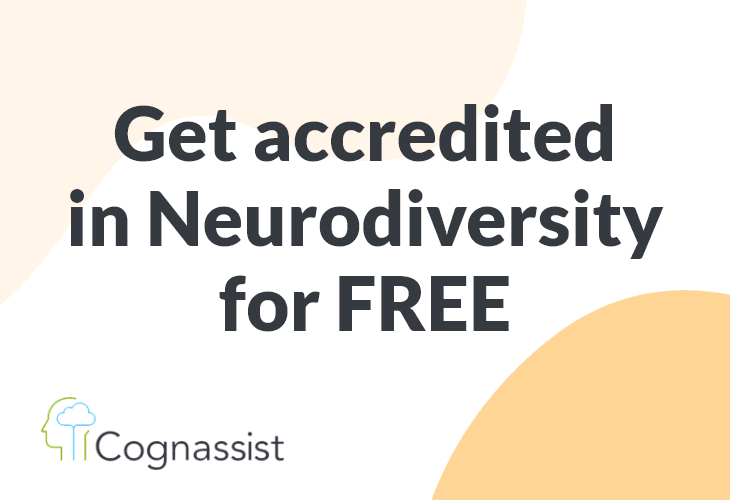How to support neurodiverse learners: #8 Visual information processing speed

The speed at which we can process information is obviously hugely relevant in learning settings when time with tutors and the programme curriculum are structured to specific timeframes.
‘‘Many cognitive activities require a person’s deliberate efforts and people are limited in the amount of effort they can allocate. In the face of limited processing resources, the speed of processing is critical because it determines in part how rapidly limited resources can be reallocated to other cognitive tasks’’ (Kail, 1991, p. 492).” (The Cattell-Horn-Carroll Theory of Cognitive Abilities, 2014)
Difficulties with visual information processing speed can cause noticeable behaviours, like:
- Problem with writing notes and listening at the same time.
- Slowed reactions to new information or sudden changes.
- Feeling anxious and overwhelmed about completing short-notice projects.
- Difficulty having conversations or responding to direct correspondences.
Our three top tips for supporting a need in visual information processing speed
#1 Extra time
Educators are well aware that some learners may require more time to process information and complete tasks throughout their learning and during assessment.
This is why extra time is a crucial reasonable adjustment for people who experience difficulties processing visual information – it’s not just a nice-to-have but a necessity.
However, it’s all too easy to use extra time as a catch-all support tool when we’re unsure what other options are available.
Ask learners if the extra time is definitely helping and try out relevant alternatives – the learner may just be worried they won’t receive any support if they say extra time isn’t working for them.
For a list of appropriate reasonable adjustments, there’s a handy resource available – The End-point Assessment Reasonable Adjustments Guidance. This matrix, published on the Institute for Apprenticeships & Technical Education website, is full of specific reasonable adjustments depending on learners’ needs.
#2 Suggest reading scribe or audio notetaking software
Using text-to-speech and notetaking software can make learning and concentrating in a classroom setting much easier for some learners. It allows them to review the information and make notes in their own time, preventing cognitive overload.
If learners feel overwhelmed, the most likely outcome is that they will stop paying attention altogether, which, while frustrating for tutors, can be avoided with the right support.
Even without some of the sophisticated software options available, getting learners to simply record the lesson on their phone can help.
If their recording has no video, it’s a helpful tip to say out loud when you are switching slides or referring to specific visual resources or handouts – this way the learner won’t get lost when they review the recording later.
#3 Provide slides or visual information in advance
This is another simple but incredibly effective tip. It allows learners to see what they will be working on and get a head start for a specific topic or lesson.
Preparation never goes to waste. It’s how tutors approach each lesson, so passing on some of these planning skills and pre-prepared materials to learners can reduce the strain of having slower information processing speed and give them more confidence.
We all experience some form of difficulty or anxiety in education and work – that’s just the reality of being human.
But for people who experience more significant difficulties, it can have a greater impact on their lives and can put many people at a disadvantage.
It’s our responsibility to remove that disadvantage and level the playing field to give everyone an equal opportunity of success.
Hopefully, this series on how to support neurodiverse learners has provided useful insights on how to evolve your organisation’s approach to learning and learning support.
Remember, these are just examples of how to identify and support learners. Each person is different, and what works for one learner may not work for another.
That’s why we provide personalised strategies so that each learner gets the support they need on a case-by-case basis, depending on their cognitive profile and level of study.
Dr. Louise Karwowski, Head of Science, Cognassist
So, what’s next?
We’re about to bring you something very exciting. A serialised set of guides on how to identify and support learners with a need in the eight key cognitive domain.
How to support neurodiverse learners: |
We’ll be posting one guide a week, rounding up with a podcast with Dr Louise Karwowski, Head of Science at Cognassist, who will discuss the importance of starting the conversation about neurodiversity with your staff and learners.
If you like the sound of understanding more about neurodiversity, you can register for free for the NCFE endorsed Neurodiversity Masterclass here:
You can also check out the full guide How to support Neurodiverse learners now.












Responses